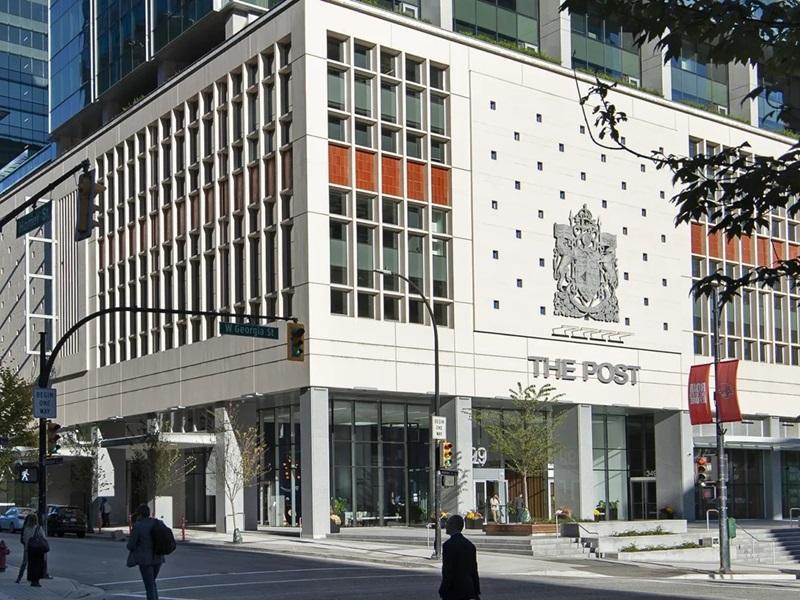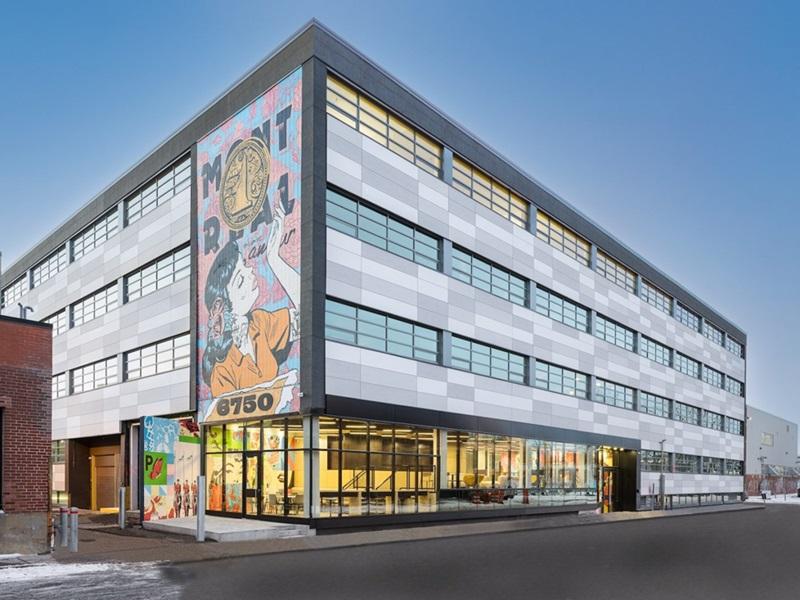
Edmonton's office vacancy declined in the third quarter, raising hopes for a change in a market that has languished since 2018.
Edmonton still ranks second-highest behind Calgary in office vacancy, hovering between 19.5 and 22.7 per cent depending on the real estate brokerage doing the calculations.
Most downtown districts and the wider suburban market showed positive figures in Q3. For the downtown core that’s the first decline in vacancy since early 2021 and in overall vacancy since 2018, according to most real estate firms.
Cory Wosnack, principal and managing director of corporate executive sales and leasing for Avison Young, said there are some positive green shoots but the city is still a long way from being a balanced market.
This quarter’s shift reflects the way office space is being reimagined, he suggested.
“We’ve had two (educational) institutions commit to large leases in office buildings. This is unique for us. We’re thrilled by it. It’s showing the flexibility of building owners to look at other uses than traditional office occupiers,” Wosnack told RENX
Educational business office leases
Classical Academy, a charter school new to the city, is leasing 61,000 square feet in a former Services Alberta office building on 76th Avenue in south Edmonton.
NorQuest College, an institution that caters particularly to new Canadians, is expanding its footprint into 63,000 square feet in the Intact office building on Jasper Avenue.
“We’re going to see more space leased by educational groups in the near future and that will outpace the space leased by traditional office occupiers,” Wosnack said.
Another potential reuse of the space glut is conversion to residential. Calgary has had success with a municipal incentive to kick-start conversions and Edmonton city council is to consider incentives at the end of October, Wosnack said.
Rental rates remain stagnant in the city, particularly downtown. Avison Young pegs the average lease rate at $18.15 downtown and $15.14 in the suburbs. Trophy, or AA rates, range up to the mid-$30s per square foot.
Wosnack said it will require a more balanced market to kick-start new construction. Edmonton’s ICE district is home to four relatively new office buildings, but most of the downtown inventory was build in the 1970s and '80s.
ICE District delays new tower construction
A 16-storey office tower planned for the ICE district has been postponed because of market conditions.
A prospective tenant for that building, Canadian Western Bank, recently announced it will instead move to the financial district’s Manulife Building at 10180 101 St.
Mark Anderson, vice-president of CBRE, said CWB is already downtown so the transaction won’t have much effect on absorption.
The move does, however, reaffirm that companies like CWB still see a place for office space and a place for them in the city’s central business district.
The 36-storey Manulife building has been a bellwether for the financial sector, Anderson noted.
“It’s going to do tremendous things for the vibrancy of the core.”
The decision by ICE District Properties not to proceed with its office tower also relieves concerns about adding new inventory to the already challenged market.
Focus turns to renovations, upgrades
Anderson said that while there are no new buildings under construction there is considerable activity as owners retrofit and improve existing buildings to compete for tenants.
Manulife is planning a renovation at its building and hammers are swinging at Rice Howard Place, formerly known as Scotia Place, Anderson said. A couple of other major renovation announcements are pending, he said.
Anderson sees some bright spots in more traditional office occupants and the economy in general. He said there is some increase in engineering firms looking to expand their space.
“They are top of the funnel when it comes to big projects in the region . . . When the engineers are busy we know other industries are going to be busy downfield from them in short order,” he said.
An area close to downtown showing a Q3 vacancy uptick was the 124th Street District. Two major shifts affected the numbers, sending vacancy to 31 per cent, according to the Colliers quarterly report.
Alberta Health Services moved out of Plaza 124 at 10216 124 St., vacating 80,000 square feet. Fahad Shaikh, senior vice-president, office and health care for Colliers, said the building is largely vacant and may be a candidate for conversion to residential.
Insurance brokerage Lloyd Sadd is moving and expanding from 22,000 square feet in the Guardian building at 10240 124 St., to 44,000 square feet in the Annex building downtown at 10120 103 Ave.
Re-examing Edmonton's government district
Edmonton’s market is dominated by government offices. Thus, recent moves by the provincial government such as the downsizing and consolidation of the Alberta Health Services staff, make an impact.
Shaikh said some properties in the government district, between 105 and 112 streets, could be well-suited for conversion to residential.
Suburban markets in Edmonton did well in the third quarter, Shaikh said, with positive absorption south of the North Saskatchewan River and particularly healthy vacancy rates in the far-south Henday district. That district has the lowest vacancy rates at close to 11 per cent.
“The product is relatively newer or new and that’s where population growth is. There is easy access for staff, to the airport and all points of the city.”
Lisa Baroldi, CEO and president of the Building Owners and Managers Association (BOMA) Edmonton, said her industry is beset with issues this generation hasn’t seen before, including high interest rates, skyrocketing construction costs and challenges with downsizing tenants.
Baroldi said the flow of workers getting back to the office after working remotely during the pandemic has lagged.
“We’re not seeing the kinds of increases in terms of government employees coming back to the office that we anticipated after the height of COVID,” Baroldi said.
The rate of occupation varies from building to building depending on the government department and how hybrid work policies are implemented, she said.
A survey of BOMA members in Edmonton and Calgary showed that since the beginning of the pandemic building owners are spending $200,000 annually on keeping properties clean, safe and activated.
Tenants are paying about $30,000 more on issues such as increased security and training on dealing with vulnerable people.










